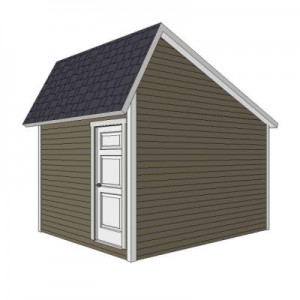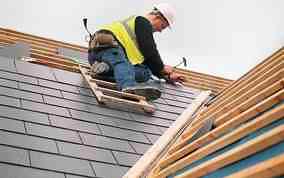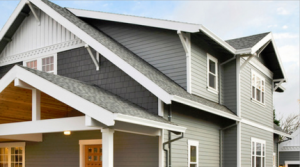Review: Hitachi NV45AB2 1-3/4-Inch Nailer For Roofing Colorado Springs
Having good tools in roofing Colorado Springs is always a worthy investment. You never know when you need to do things your way, especially when it comes to ensuring you have a sturdy roof above your head.
Hitachi NV45AB2 1-3/4-Inch Coil Roofing Nailer is one of the brand’s most lightweight and durable roofing tools. It is an ideal tool for a variety of construction projects, including installation of asphalt roofing shingles and insulation boards.
Its durable construction design features a high-capacity side-load magazine that promises easy replacement, its rubber pads keep the nailer from sliding, and its pneumatic power feed and return allows the tool to work in any weather.
The NV45AB2’s side-loading magazine accepts 120 7/8-inch to 1-3/4-inch-long coiled wire collation nails with 0.120-inch diameters. Its air inlet is 3/8 inch, and the ideal operating air pressure is 70-120 psi.
Setting the NV45AB2 apart is the quick-driving feature that allows for maximum efficiency when nailing on large areas. Using the NV45AB2, a nailer can shoot each time the nose touches the work surface.
It also has a large carbide inserts on the nose to ensure top performance during operation.
Promises Durability, Ease of Use
You can expect the Hitachi NV45AB2 1-3/4-Inch Coil Roofing Nailer to have precision nailing and flush driving. But a primary function such as that is not one that separates this roof nailer from all the others in the market.
What this tool boasts of is its durability, which even an 18-wheeler couldn’t probably break, thanks to its bulletproof design.
And at just 5.5 lbs., you can expect the Hitachi NV45AB2 roofing nailer to be well-balanced for easy maneuverability while you’re working on the roof. It can easily be handled with one hand, and its long-lasting, non-slip rubber grip keeps you in control.
Its well-balanced design ensures easy one-handed operation, and the long-lasting non-slip rubber-grip keeps you comfortable and in control. Rubber on the nailer’s side allows you to place the tool on a roof without worrying about it sliding off.
Another thing this tool is mighty proud of is its all-weather capacity, allowing for its use even during the harshest of weather.
Rigorously tested even amid the most extreme weather conditions, the Hitachi NV45AB2 Roofing Nailer has a pneumatic-powered nail-feed mechanism that can remove dirt and moisture from the nailer, making sure this tool will work in any weather.
About 78 per cent of users have given this product a five-star review, but drawbacks still highlighted some problematic aspects such as occasional nail-skipping. There were also experiences where the gun drove crooked nails on the roof.
Overall, measuring 9-27/32 x 4-5/8 x 10-3/8 inches (LxWxH), the Hitachi NV45AB2 is the most handy, durable and user-friendly roofing nailer in the market today. If you’re in the lookout for the ideal tool for your construction needs, this one is a true gem.














